- News
- Reviews
- Bikes
- Accessories
- Accessories - misc
- Computer mounts
- Bags
- Bar ends
- Bike bags & cases
- Bottle cages
- Bottles
- Cameras
- Car racks
- Child seats
- Computers
- Glasses
- GPS units
- Helmets
- Lights - front
- Lights - rear
- Lights - sets
- Locks
- Mirrors
- Mudguards
- Racks
- Pumps & CO2 inflators
- Puncture kits
- Reflectives
- Smart watches
- Stands and racks
- Trailers
- Clothing
- Components
- Bar tape & grips
- Bottom brackets
- Brake & gear cables
- Brake & STI levers
- Brake pads & spares
- Brakes
- Cassettes & freewheels
- Chains
- Chainsets & chainrings
- Derailleurs - front
- Derailleurs - rear
- Forks
- Gear levers & shifters
- Groupsets
- Handlebars & extensions
- Headsets
- Hubs
- Inner tubes
- Pedals
- Quick releases & skewers
- Saddles
- Seatposts
- Stems
- Wheels
- Tyres
- Health, fitness and nutrition
- Tools and workshop
- Miscellaneous
- Cross country mountain bikes
- Tubeless valves
- Buyers Guides
- Features
- Forum
- Recommends
- Podcast
TECH NEWS
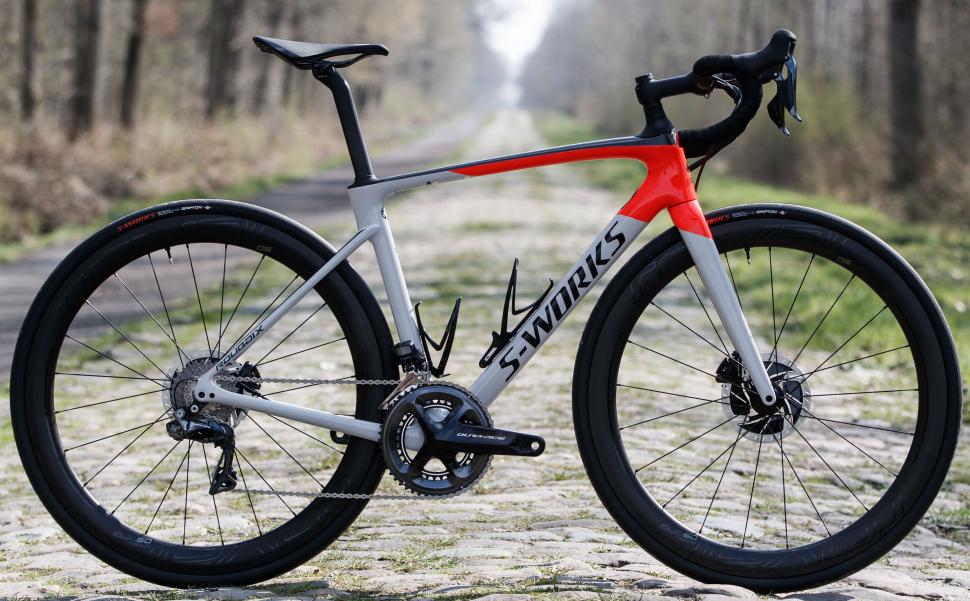 specialized roubaix pave
specialized roubaix paveSpecialized Roubaix 2020 First Look: Everything you need to know about the new endurance bike
A few days before the start of the legendary race it is named after, Specialized has unveiled a brand new Roubaix. The new bike builds on the 2016 redesign and is claimed to be more aerodynamic not only than the bike it replaces but also Specialized's current Tarmac SL6 race bike, whilst also having lighter, stiffer frame and incorporating the new on-the-fly adjustable Future Shock 2.0 with rebound and compression damping.
New Roubaix at a glance:
- Adjustable Future Shock 2.0 with rebound and compression damping
- 900g frame - Lighter than the Venge
- More aero than the Tarmac SL6
- 33mm tyre clearance
- Threaded bottom bracket on all models
- New Pave seatpost and internal seat clamp
- Same geometry but the addition of three pro race versions
- Priced from £2,600 to £10,000
First launched in 2004, the Roubaix has come a long way in 15 years. At its launch, it was a radical new approach to bike design, focused on comfort via both a frame engineered to provide compliance and more relaxed upright geometry for cyclists who don’t want the back strain.
It was a success, perhaps not overnight, but it has gone on to become a hugely popular model for the US company and helped to forge an entire new sportive/endurance category of bikes that are of great importance to many bike brands.
Set against that backdrop of sportive riding, the Roubaix, as its name suggests, was also designed for the most demanding and gruelling race on the pro cycling calendar. Featuring more than 50km of ferocious pave on a 280km route across northern France, Paris-Roubaix is the most visually iconic one-day bike race in the world. Like gladiators, the racers battle on the brutal cobbled roads and legends are crowned in the historic Roubaix velodrome and names immortalised in the concrete showers.
- Read the first ride review here.
So the Roubaix needs to be fast and capable on the cobbles at the hands of the pros, but comfortable and easy to ride for us mere mortals. It’s a tricky challenge, and it’s forced the Roubaix to constantly evolve into what has been launched today.
Future Shock 2.0
Smoother is faster is the mantra with the new bike. It’s a philosophy that goes right back 30 years to the company’s first foray into mountain bike suspension with the original and now iconic FSR. Smoother is faster is also evidenced with any wheeled vehicle, from your own motor car to an F1 racing car or motorbike.
Development for the original Future Shock began in 2012 and first featured on the radical 2016 Roubaix redesign model this new bike replaces. That 2016 bike was a ground-up redesign, with the long-running Zertz inserts consigned to the engineering department floor and replaced by the Future Shock, a sprung cartridge underneath the stem designed to help isolate the rider from bumps and vibrations.
In case you missed the previous Roubaix and are wondering what the Future Shock is, it’s a cartridge damper providing 20mm of vertical movement at the handlebar, positioned as it is below the stem and above the head tube. This is important because it's about suspending the rider, not the bike: only about 15% of a rider's body weight is on the handlebars - which is where their Future Shock suspension system comes in. As well as providing more comfort, it also promotes the benefits of increased traction with a claimed 5.8% improvement over a rigid front-end.
It hasn’t been without its problems, with the clamping steerer tube collars leading to a recall in early 2019. To be clear, the issue wasn't with the Future Shock itself but the clamping collar around the top of the stubby steerer tube which is used for preloading the headset bearings that appears to be the cause of the issue. But it’s a problem it duly fixed for all bikes produced since.
The new Future Shock 2.0 still provides 20mm of movement, but it has two major changes. First is the on-the-fly adjustment, allowing the rider to adjust between fully open and locked out. Previously Future Shock could be tuned for different roads and riders by swapping out the springs, but that adjustment has been simplified with a turn dial.
Twist it anticlockwise to open the shock for taming bumpy roads, twist it clockwise to firm it up. It’s not actually fully locked out in this position, but firm enough that it doesn’t move under your body weight when sprinting or climbing out of the saddle. Impacts of sufficient force will still activate it to a small degree.
“A lockout was requested by some riders for the Future Shock but in reality, the rider just wanted more control to lessen the erratic nature they experienced on some rides because of their style of riding,” explains Specialized.
I should add that wasn’t my experience when reviewing the Roubaix a few years ago, I was highly impressed with its ability to soak up bumps without introducing a vagueness to the ride feel and never felt the need or desire to lock it out, even on smoother roads (though there aren’t many of those around my parts).
An early development Future Shock 2.0 was first trialled by Peter Sagan when he won last year’s Paris-Roubaix. If you watch footage from that race you’ll see him twiddling his knob between pave sectors. It’s since been developed and refined and wrapped up in an all-new bike.
The other big change to the Future Shock 2.0 is the introduction of a hydraulic damper. A simple single circuit thru-shaft damper controls compression and rebound and should provide a lot more control than the undamped original. You can’t adjust the damping, but it should give the Future Shock a more refined feel with more control.
The Future Shock 2.0 has also been given an aesthetic makeover. There was plenty of commentary about the unique look of the original Future Shock’s rubber boot when the Roubaix first launched, so the design team tasked themselves the challenge of making it look more streamlined and, let’s be honest, less ugly. A smooth rubber boot along with a dedicated Future stem all help to provide a better-looking front-end. But what do you think? Let us know below in the comments.
Future Shock 1.5 for Comp and Sport models
Unfortunately, the new Future Shock 2.0 hasn’t been rolled out across the entire range. It’s available on the Expert, Pro and S-Works bikes, but the Comp and Sport instead utilise Future Shock 1.5, an update on the previous Future Shock developed for the current Roubaix.
It has a lighter and more progressive spring with new bottom-out and top-out bumpers to improve the control instead of the damper in the Future Shock 2.0. It’s a lighter spring than that used in the Diverge which helps to give the Future Shock 1.5 a smoother action. It’s also claimed to be quieter when unloaded too.
If you’re wondering if you can fit the new Future Shock 2.0 to your current Roubaix, I’m afraid it’s a no. The new cartridge has slightly different dimensions (it’s longer) that means it’s not backwards compatible.
As for servicing, it’s a totally sealed unit and you’re looking at 500 hours or 1.5-year service intervals, whichever comes first. There’s still the same 30mm of stack adjustment via different top spacers.
Don’t worry, you’re not tied into the Future stem, any stem from any brand can be fitted. If you use it, the Future stem is offered in lengths from 70 to 130mm with a 6-degree rise and offers an integrated computer mount. There's also the Hover handlebar, available in three rises to help cyclists achieve the perfect fit.
The new stem also provides an out-front Barfly computer mount compatible with Garmin and Wahoo computers.
New Pave seatpost
The other key design focus was ensuring a suitable balance from the front to the rear of the bike. The new Roubaix maintains the same 65mm lower seatpost clamp to allow the seatpost to deflect when the back wheel smashes into a cobble.
However, Specialized has tidied up the design, swapping from a two-bolt external clamping setup to an internal wedge design. This is aimed at allowing easier adjustment with the bolt hidden underneath a tight-fitting rubber seal. The rubber is designed to be flexible to allow the post to move back and forth.
Then there is the new Pave seatpost which replaces the long-running CGR post. It’s a smarter looking design - there weren’t many fans of the CGR post - but it maintains the same level of compliance. It’s also aerodynamic owing to the fact it’s the same profile as the Tarmac SL6 seatpost and is 80g lighter.
Specialized didn’t arrive at the new Pave without a few other design ideas. During the development of the new bike, Specialized even cobbled together a Future Shock into a seatpost but apparently found it produced strange sensations that didn’t align with its desire to maintain pedalling efficiency, along with being heavy and ugly.
Because of the profile, the Pave seatpost can be fitted to the Tarmac which might be an interesting option but could lead to an unbalanced ride feel, with a stiff front-end and soft back-end, so obviously Specialized doesn’t recommend this, though there’s nothing to stop you from trying.
All models, from the entry-level to the S-Works will be fitted with the same all-carbon Pave seatpost. It’ll also be available in a zero offset option.
More aero than the Tarmac SL6
The Roubaix becomes an aero endurance bike. Races are getting faster and aerodynamics has become a key pillar of bike design in recent years. In 2017 Greg Van Avermaet won the fastest ever edition of Paris-Roubaix, completing the 257km course in a staggering 45.204kph (thanks in part to a generous tail wind).
This along with feedback from the team that the Roubaix bike wasn’t as fast as the Venge or Tarmac prompted Specialized to consider the aerodynamic performance of its endurance model for the first time. By utilising the same computer modelling software and expertise gained in developing the recent Venge, the new Roubaix is more aerodyamic: a claimed 24 seconds faster over 40km compared to the current Roubaix.
Specialized adds that the bike is faster than the old Roubaix at any speeds, and cyclists travelling at lower speeds stand to gain even more simply because they are on the road for longer than speedier cyclists.
Even more impressive is the fact that the Roubaix is faster than the current Tarmac SL6 at all measured yaw angles! That an endurance bike is more aero than a regular ride bike is astounding, and certainly opens the door to aero becoming a factor of all future endurance bikes built for racing as much as for sportive riders.
The improved aerodynamics is achieved via new profiles for the head tube, fork blades, downtube, seat tube and seatpost, and the enlarged seat clamp area.
Lighter than old Roubaix
You’d expect the new bike to be lighter, and you’d be right. Specialized has produced a claimed sub-900g frame for the S-Works version. But instead of just focusing on the frame, the system weight (frame, fork, Future Shock 2.0, headset and seatpost) are 50g lighter on the S-Works and 175g on the entry-level models.
The top of the range S-Works models are made from the highest grade FACT 11r carbon fibre, while the Base, Sport, Comp, Expert and Pro models use a FACT 10r carbon fibre frame.
Details details details
Specialized really focused on the details and one of the biggest changes that will get a round of applause is the decision to use a threaded bottom bracket on all models, from the cheapest to the most expensive S-Works bikes. Press-fit really is facing some serious challenges to its once dominant place on high-end road bikes, but will anybody miss it if it vanishes completely? Probably not is my bet.
Tyre clearance is wider than the previous model with the max width pegged at 33mm, with all bikes specced with 28mm tyres. The max width does depend on the tyre and rim combination but it’s a small improvement on the previous bike which was extremely tight on a 32mm tyre.
That the new Roubaix doesn’t have even wider tyre clearance is due to Specialized feeling this is the as wide as an endurance bike wants to go without unduly compromising other aspects of its performance, and it has the Diverge if you truly want really wide tyre clearance. Still, some might consider it a missed opportunity not to go to 35mm or thereabouts for those riders wanting to increase the range of terrain the bike is capable of tackling.
Geometry
Rider-First Engineering is a key part of the redesign and as it has already done with other models in its range, Specialized has scrapped the women-specific bikes choosing instead gender neutral bikes. This is born out of analysing the vast database of digital fit data acquired by Retul (it bought the fit company a few years ago) which helped it to put aside traditional assumptions about gender differences.
By overlaying the range of bike sizes of this fit data it was able to revise the geometry, therefore removing the need for gender-specific bikes. Interestingly, Specialized found that there’s more likely to be differences between two men than between a male and female. Specialized says this is about bringing performance to everyone, no matter the gender, height or any other differences.
The new Roubaix then is available in 11 frame sizes but three of those sizes are the new S-Works Team Geo, distinguished by using the same geometry but with a shorter head tube length and reach. These frames were developed for the pros to be able to mirror their Tarmac/Venge fits, and Specialized is now offering these frames to customers for the first time.
The three sizes, 53, 57 and 59cm have the same size as the Tarmac in sizes 54, 56 and 58cm respectively.
I want one, how much will it cost?
If you want a Roubaix with the new Future Shock 2.0, you have to look at the Expert, Pro and S-Works models, the Comp and Sport use the Future Shock 1.5.
The Roubaix Sport at £2,600 kicks off the range and is specced with a Shimano 105 groupset with Praxis chainset and hydraulic disc brakes. The £3,400 Roubaix Comp with Shimano Ultegra mechanical is probably the pick of the range from a performance/affordability basis with aluminium DT Swiss wheels and an Adventure Gear Hover handlebar.
The bike I’ve been riding is the S-Works Dura-Ace Di2 bike costing £9,500 with Roval CLX50 wheels, S-Works Power saddle and S-Works Carbon Hover Drop handlebar (pictured above).
- ROUBAIX SW DI2 SAGAN COLLECTION £10,000.00
- ROUBAIX SW RED ETAP (with power) £9,500.00
- ROUBAIX SW DI2 (no power) £9,000.00
- ROUBAIX PRO FORCE ETAP £6,400.00
- ROUBAIX EXPERT UDI2 £5,400.00
- ROUBAIX COMP UDI2 £4,400.00
- ROUBAIX COMP £3,400.00
- ROUBAIX COMP SAGAN COLLECTION £3,400.00
- ROUBAIX SPORT £2,600.00
- ROUBAIX SW FRMSET SAGAN COLLECTION £3,500.00
- ROUBAIX SW FRMSET £3,400.00
When can I buy one?
Right now! Specialized has lined up the unveiling of the new bike with availability in bike shops so your local dealer should have a shiny new Roubaix sitting on the showroom floor if you pop in there this weekend.
You can get more info at www.specialized.com
What's it like to ride?
I've been out in Belgium and France riding the new Roubaix over the cobbled roads it was designed for, and which it will be raced over this weekend. First impressions only tell you so much - we'll get a more in-depth review once we've been riding the new bike on our own roads in the UK - but it's clear the new bike is incredibly smooth on the cobbles with more comfort and more control.
It’s clear now as when I first tested the original Roubaix that the Future Shock is no gimmick. If you want a smoother ride on pave, the Future Shock delivers. Combined with the new Pave seatpost and 28mm wide tubeless sets inflated to 4.8 bar, the bike does an excellent job of providing a smooth ride. It's less jarring with more of the vibrations and impacts softened, and not only does this help isolate you from the savagery of blasting along cobbles and lead to less fatigue and general discomfort, but it also results in improved control and confidence.
Here's a more in-depth first ride. Once we get our hands on a bike back home we'll work on bringing you a full review. In the meantime, if you have any questions do feel free to ask them below.
David worked on the road.cc tech team from 2012-2020. Previously he was editor of Bikemagic.com and before that staff writer at RCUK. He's a seasoned cyclist of all disciplines, from road to mountain biking, touring to cyclo-cross, he only wishes he had time to ride them all. He's mildly competitive, though he'll never admit it, and is a frequent road racer but is too lazy to do really well. He currently resides in the Cotswolds, and you can now find him over on his own YouTube channel David Arthur - Just Ride Bikes.
Latest Comments
- whosatthewheel 8 hours 21 min ago
I find it fascinating how careless driving is not considered dangerous by the law.
- lawrence18uk 8 hours 27 min ago
" in what appears to be two random, completely unprovoked attacks."...
- hawkinspeter 9 hours 19 min ago
You could get away with much less turning area required if you go for a Kakeya set...
- Gbjbanjs 9 hours 31 min ago
Insured yes, through BC, no.
- Gbjbanjs 9 hours 38 min ago
Any chance we could have bike reviews for people with normal disposable incomes? My ti bike cost £2k, brilliant, versatile.....
- chrisonabike 9 hours 56 min ago
- matthewn5 10 hours 37 min ago
I built a gravel bike last summer - a Ridley Kanzo Fast with Campag Ekar - and have used it through the winter with mudguards for club runs and the...
- David9694 14 hours 11 min ago
Another Conservative bemused at how but a Conservative policy is turning out
- Global Nomad 19 hours 41 min ago
would be good to see you test the Newmen wheels the weight/price ratio is extremely good and suggests that europeans can match the chinese in this...
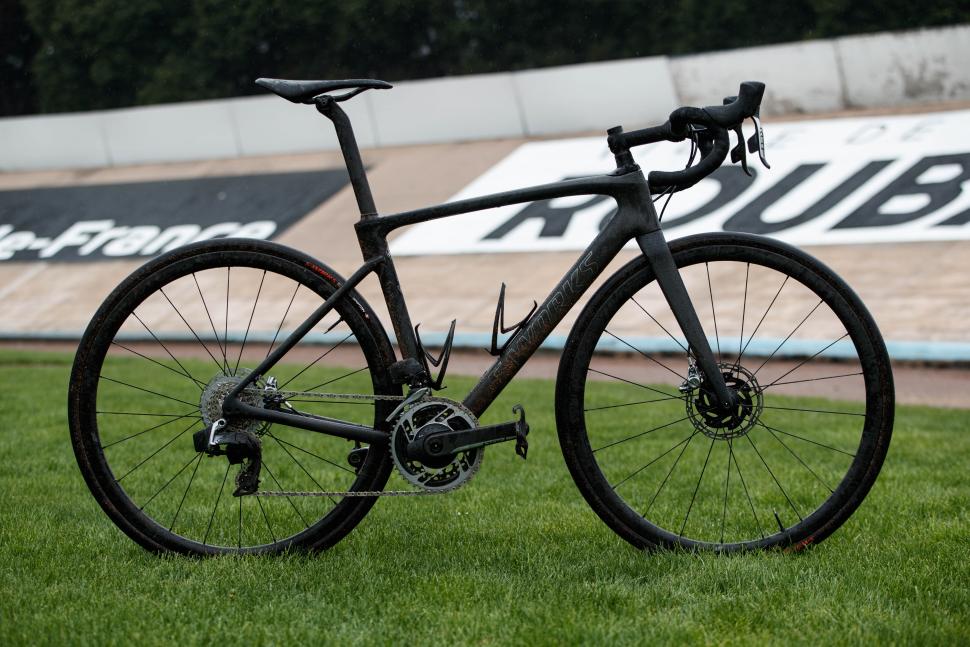
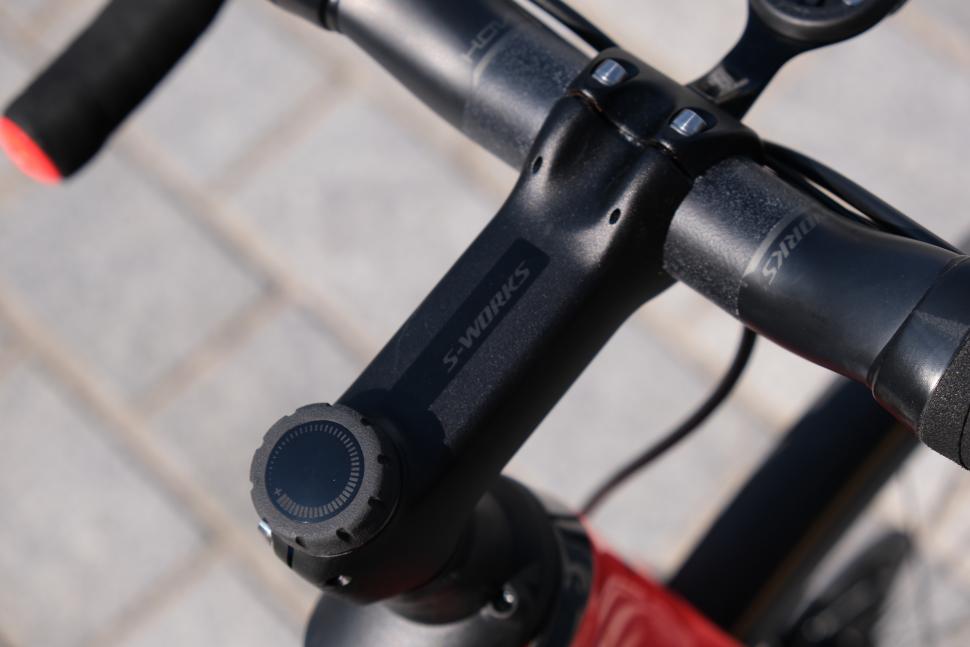


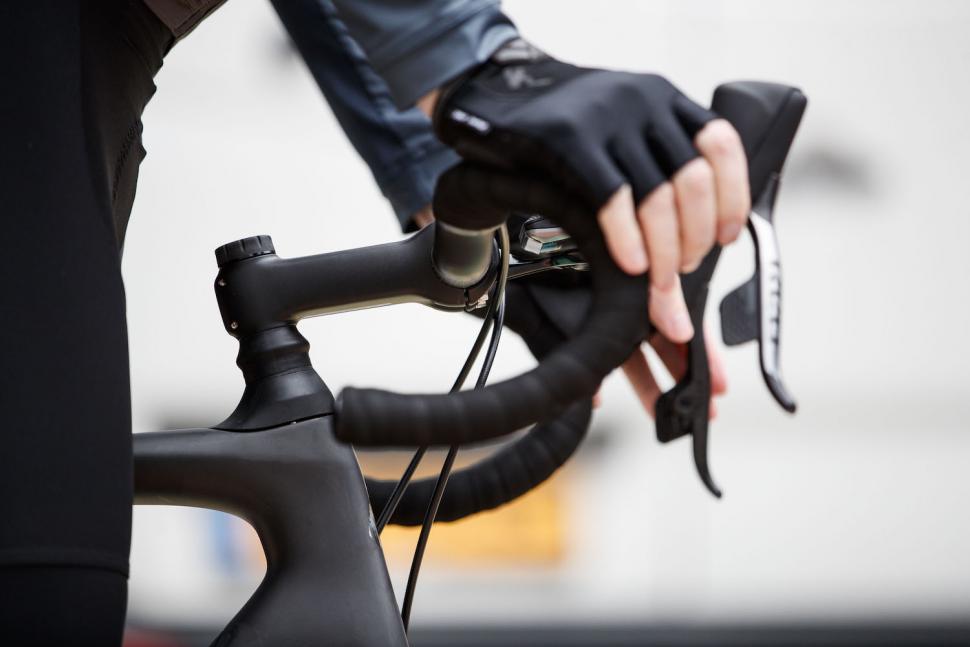

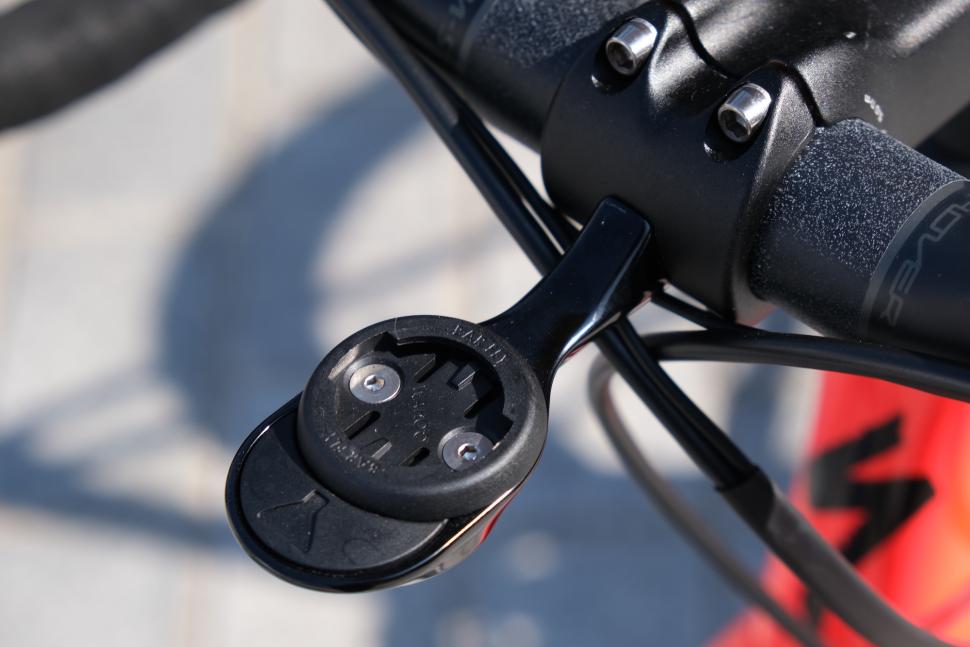


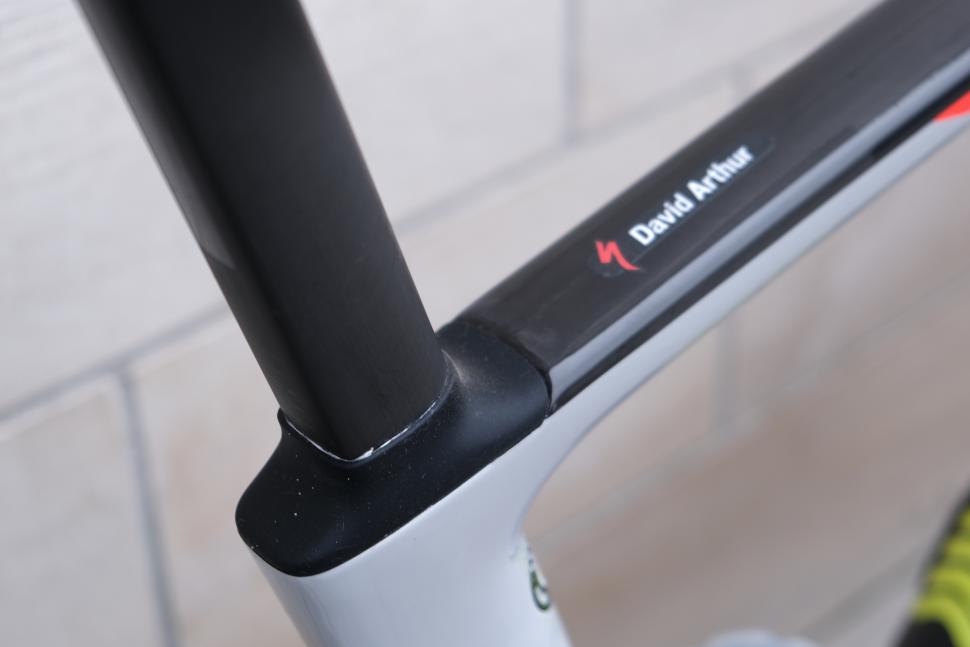


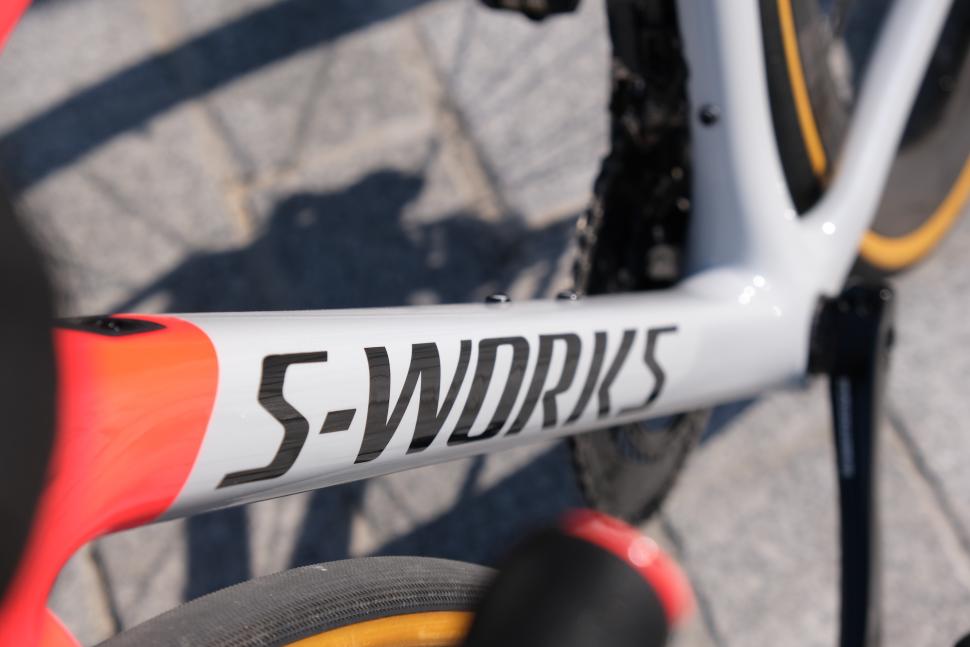
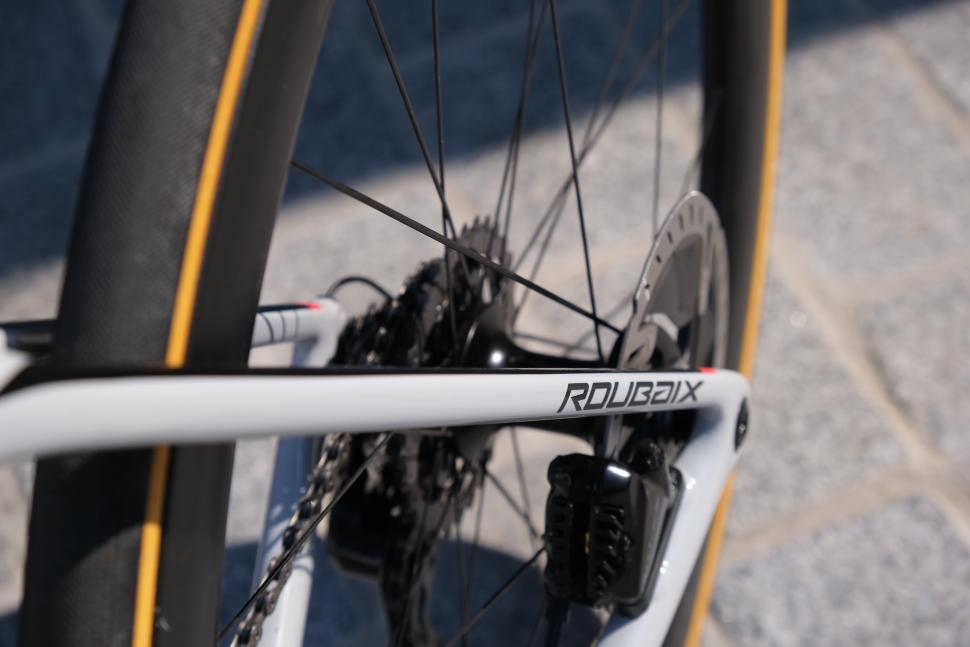
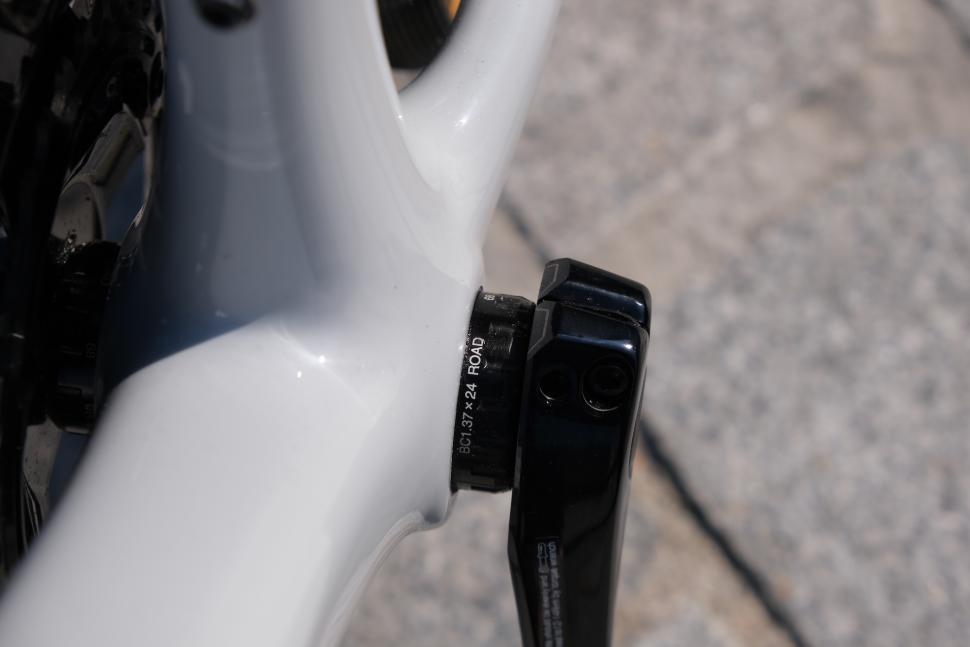

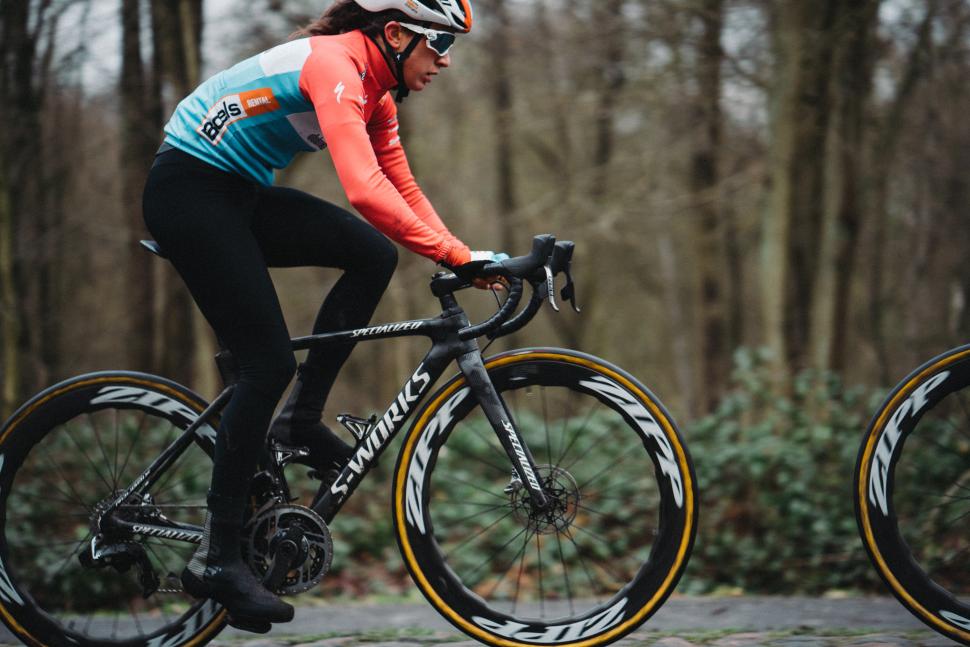
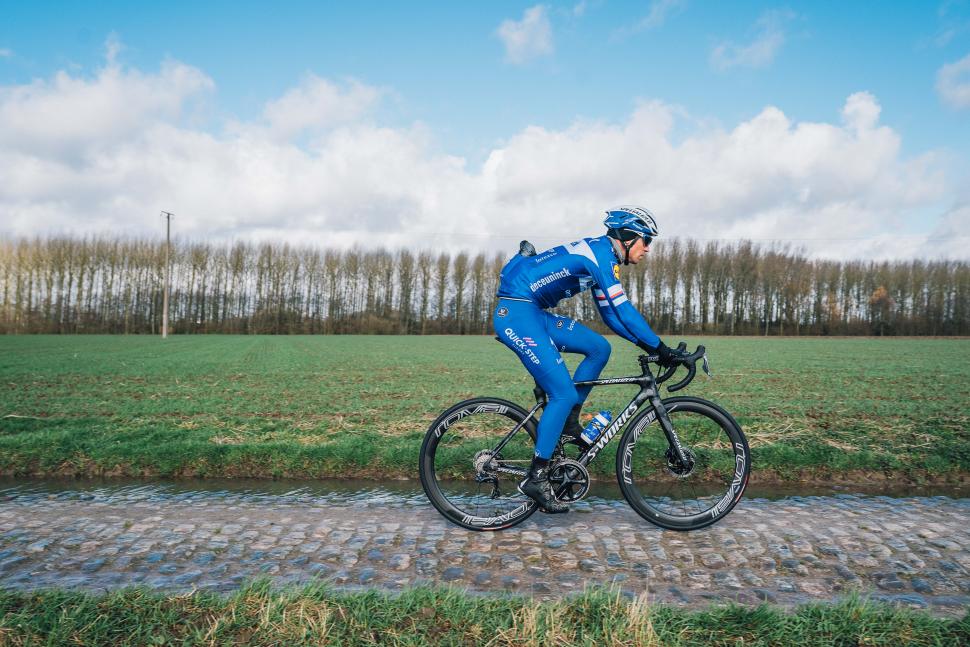
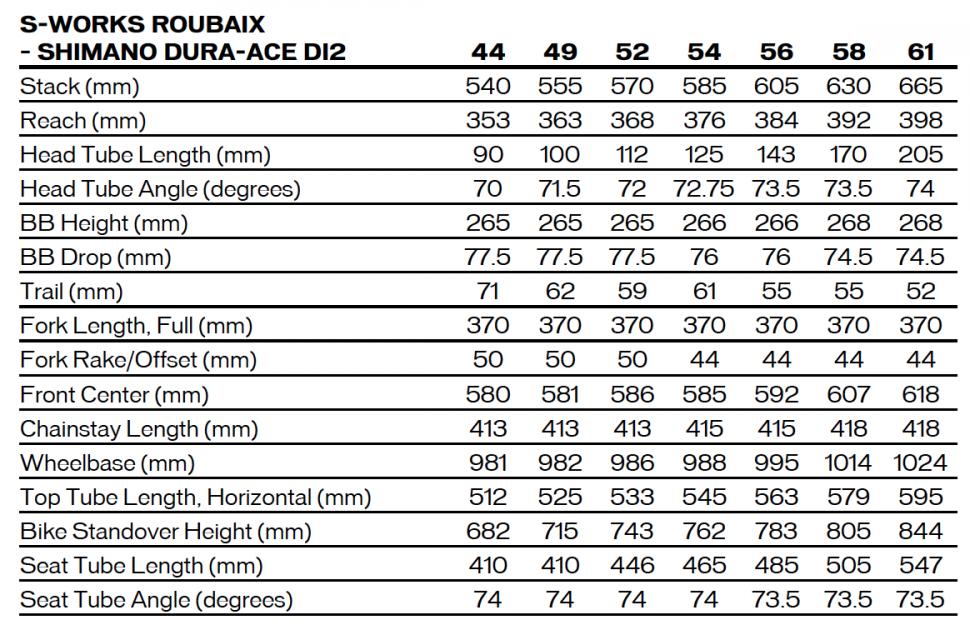

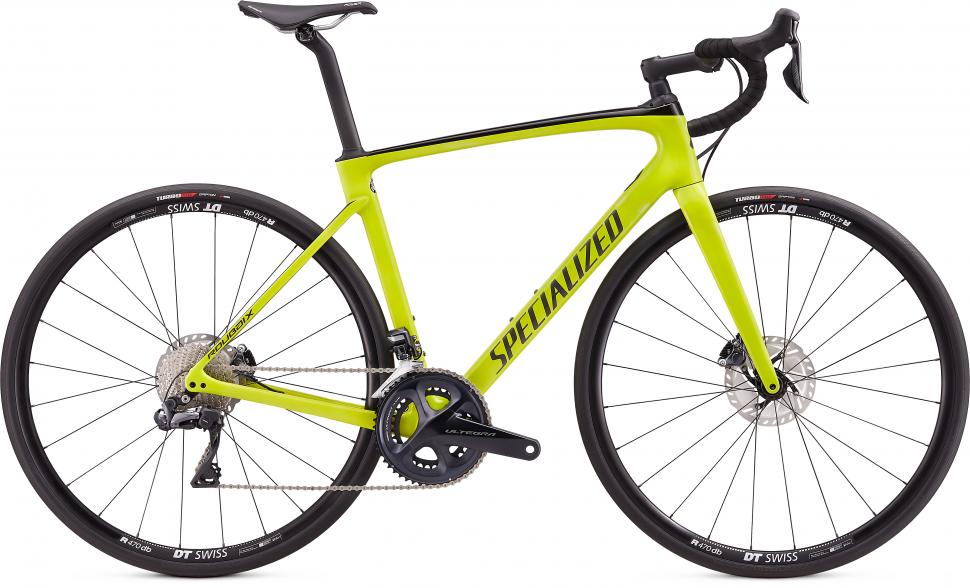
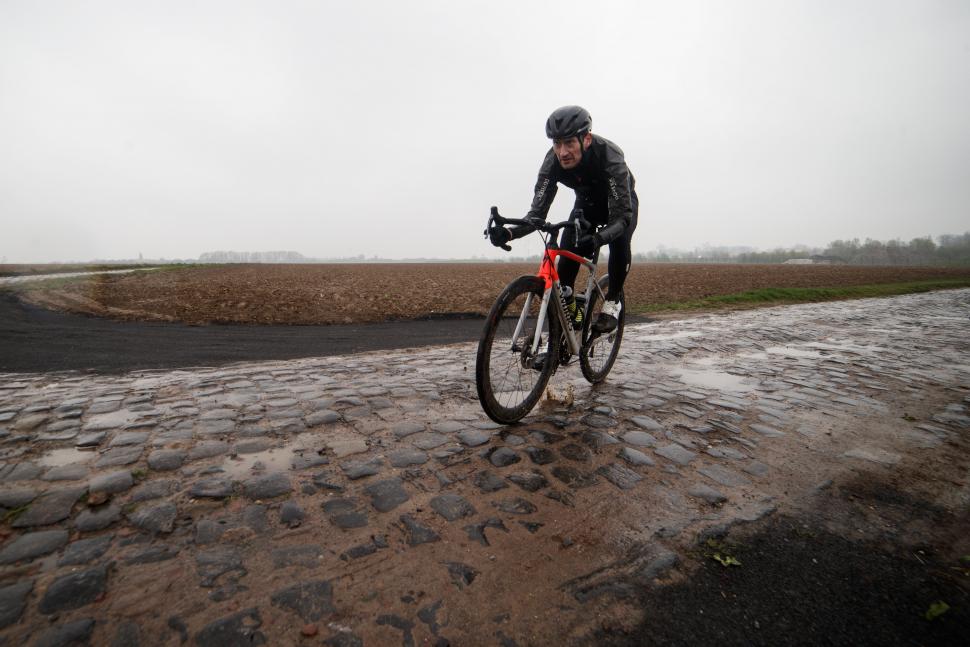
Add new comment
34 comments
David, Can you specify or do you have any updates on the best,largest wheel/tire set for the Roubaix 2020? It came with a road tire but Im looking at doing a gravel race. I need someting that can do both, traction in the dirt, still crush pavement. What wont rub when torquing on the pedals. thanks.
one of the problems I see with it, and I was surprised how much effort it took to get the effect of shock absorption even set to soft it seemed pretty firm, is its an ideal solution in a race situation but not for longterm roadie bike user ownership.
sure Mr Sagan wants to be able to change his front dampening mid race without stopping and getting a load of allen keys out to do it, and its the perfect race solution, just turn a dial, job done.
But once Sagan has ridden that race, that bike likely never gets used again. Mr or Miss Roadie (assuming theres a womens version?) spending 6k on a bike is going to be riding it for many years, and if its as I assume just a torsion bar setup like suspension tuning on a motor racing car, or even if its not, over time and bumps that dial will wear, that suspension tuning will wear, its probably not water proof or dust/grit proof and eventually youll be getting less and less dampening from it. Yes theres a maintenance regime that might keep it working and not seizing up, like the suspension on my old hybrid did, but it wont stop it wearing out or breaking eventually, and then what do you do ? the brake cables are internally routed down the front forks as well I noticed, which adds to the complexity of the front setup and ease of maintenance.
I like the look of the bike, but I wouldnt want the suspension gimmick on it,and I dont race so I dont think its necessary.
I agree since I don't like to buy bikes every 8-10 years if the one I have now suits me well. I have a 2010 Kuota Kebel that I love but the custom seat post clamp broke and I can't find a replacement so it's hosed clamped for now.
When my 1994 Serotta Colorado TG needed upgraded I bought the Kuota and sold the Serotta to a friend who updated it and still loves it to this day. It's 26yo but still going strong with standard components and a rock solid frame. No high-tech BS that maybe will give you a marginally better ride.
For me, I guess I will need a new bike, that's why I'm reading this review.
BTW, if anyone has an answer to my seat post clamp dilemma please let me know.
33mn with 700c wheels, any data for 650c wheels clearance?
"A few days before the start of the legendary race it is named after, Specialized has unveiled a brand new Roubaix."
I think it's the other way round - Specialized have a trademark for Roubaix, remember?
Yeah, I tend not to have sound on when watching the videos, but after Dave's comment I checked out some more footage and it is quite clearly his stem bolts he's tightening... While I was googling I came across something about Terprstra's steerer tube breaking because they'd replaced the Futureshock with a rigid alu bung, perhaps this was what I had remembered.
Anyway, apologies for the slur on your journalistic qualities Road.cc!
The thing that would worry me about these frames with custom, proprietary parts that are specific to them, like frames with uniquely shaped seat posts, "future shocks", elastomer inserts, etc., is will spares or replacements be available in 5 or 10 years time?
Obviously this is of no concern to profoessionals that are given a new bike each year, or maybe more often than that. However, it would be pretty annoying to find that within a few years your expensive frame is pretty much useless and worthless for the lack of a small part that is no longer available.
A
I have a 2010 Specialized transition TT bike and although that uses quite a few proprietary parts they seem to be pretty easy to find. So far at least.
I guess Specialized is a pretty big concern. Perhaps I'm unduly influenced by the 90s MTB scene where lots of little manufacturers popped up, produced boutique, often expensive and "innovative", non standard stuff, then promptly went out of business.
hmm, that being the same Specialized who invented SCS wheels, put them on their "adventure bikes" like the Diverge to improve the chain line by moving the free hub in by a few mm,and which no-one noticed wasnt just another set of letters in your bike spec till they wanted or needed to replace their rear wheels and suddenly found Specialized had invented a whole new non standard rear hub spacing setup.
which meant standard rear hubs didnt fit at all, so you had to buy the increasingly rare and expensive Specialized SCS wheels, or swap out the rear hanger to a non SCS conversion, or get hand built wheels with Hope SCS flavour hubs, though I dont think Hope make the SCS hubs anymore that actually fitted.
yeah they might not be about to go out of business, but they happily build non standard stuff thats a pain to get parts for
There's a fundamental flaw in all of this is that you can't slam the stem, therefore the aesthetics are all wrong.
Or you can buy one of the pro race geometry bikes with have a shorter stack? If you're more focused on aesthetics and this weird fascination with slammed stems rather than a bike that actually fits you then it's clearly not the bike for, which is where the Tarmac comes in
Ha, Road.cc swallowing the manufacturer's spin again? Sagan's futureshock was broken last year, that's why he needed the mechanic alongside him 'adjusting' it.
D12 let him down this year as well, he's like the luddite's poster boy!
Haha Brilliant comment! He was actually tightening the stem bolts on his bike, if you look at any pics or footage from the race. Sagan prefers mechanical for the cobbled classics because he finds it easier to change gear when rattling over the cobbles than pressing the Di2 buttons
Oops! Ok, it's a fair cop, I'm only going on what the commentators said (talked about 'resetting' mech). Can't remember exactly what they said about last year's P-R but they explicitly mentioned the future shock.
Maybe they just share my prejudices! : D
The Eurosport footage I posted earlier has the two commentators stating he is fixing his stem and he seems to be tightening the retaining bolts. Sagan himself also mentioned a few months later he was bashing his bike into someone elses to try to straighten it. I don't remember anyone in the usual press mentioning he had a fancy new futureshock attached at the time although you know what to look for now in that footage.
However as it was a prototype there is no guarantee it didn't cause the problems with the stem to start off with (unless his problems were actually down to the same reason they did the public recalls last autumn).
Another great endurance bike crippled by lack of mudguard mounts.
While I understand and agree with your general point, in the case of this bike, why would you be buying it and then putting on mudguards? One of the big selling points of this bike is the aerodynamics - mudgaurds fly in the face of that somewhat.
You buy a Venge or Tarmac for aerodynamics. The Roubaix has always been the comfortable mile eater, hence why it's always been classed as an endurance bike. The Future Shock stuff for example lends itself to comfort, not getting down into an aero position which has as big an impact on aerodynamics as mudguards would.
Have you tried to do an audax with a wet arse? It's not much fun.
Have you read the stuff about this bike .. specifically the bits that state that the new bike is more aero than the current Tarmac? This new version is clearly aimed at performance.
If I were going to do an audax, this would not be my choice of bike. I'd be looking for something like a Genesis Equilibrium, a Mason (if I had the cash), or one of new 'adventure' bikes as these generally give more options mounting and tyre wise on top of the mudguards (e.g. dynamo light fixing points).
If anyone is brave enough to do an audax on a £5k bike, please record all the tuts and head-shakes directed your way.
Steel, panniers and beards definitely. Future Shock 2.0? Get out of here.
That's a rather outdated view of Audax. I've done several on carbon race bikes, at the last one I saw a chap on a 3T Strada. Surely any bike is fine as long as they are taking part and having fun?
Yep, on the last audax I did which was last month I saw many 5k bikes.
One of the appeals of Audaxs is that they're very inclusive, often far more than some MAMIL sausagefest sportives out there. No one minds what kind of bike you do them on.
Audaxs are 100% on roads and can't be done too slowly, you don't need tyres wider than 28mm. Whilst self supported the controls are usually at shops or towns so you don't need to carry too much in the way of food or drink with you.
Hence a bike such as a Roubaix would be perfect for them, if only there were mudguard mounts to safeguard against the British weather.
Rented a Roubaix on holiday for a few days and really liked the future shock 1.0. It was just about the only thing I liked. Was a Roubaix comp I think with mechanical Ultegra and felt really heavy but more importantly the position just wasn't for me. Totally subjective - it was the first endurance bike I've ever riden.
More interesting for me is that Specialized is saying it's more aero than the sl6. That means either something was amiss on the sl6 design or more likely the knowledge gained from their own wind tunnel is really accelerating and that future models are gonna really pull away from the competition
It does make you wonder just how far they can push the aero gains on bikes before the regulations really get in the way, although I suppose the way specialized do their enduro bikes they could have a venge style frame in the middle with it isolated at the front and rear to provide the comfort.
Hmmm, seems like you need to use a tool at the same time, or could explain why Specialized kept it quiet for another year if he broke it.
https://video.eurosport.co.uk/cycling/paris-roubaix/2018/sagan-fixes-his...
Its not that good that we need a double post.......
Always worth keeping an eye on Eurosport around January-March time. Very often they will do a 50% off deal for the year (£19.99), which is about as close to a no brainer, if you love cycling, as it gets.
Eurosport subscription is £9.99 for a month, or £39.99 for the year. (You can pay £4.99 a month but only if you commit to a year).
OK not free but they have a huge range of on demand cycling content to be able to watch recent events and coverage of just about any major race going forward. Not sure if you'll find less official ways to watch as compared to football cycling is still pretty niche.
On topic £5400 for the cheapest FS2 model seems like a lot of money. Spesh now make Cervelo look like the cheap option.
Usual endurance bike question which journalists always seem to forget, are there fittings for mudguards?
Pages